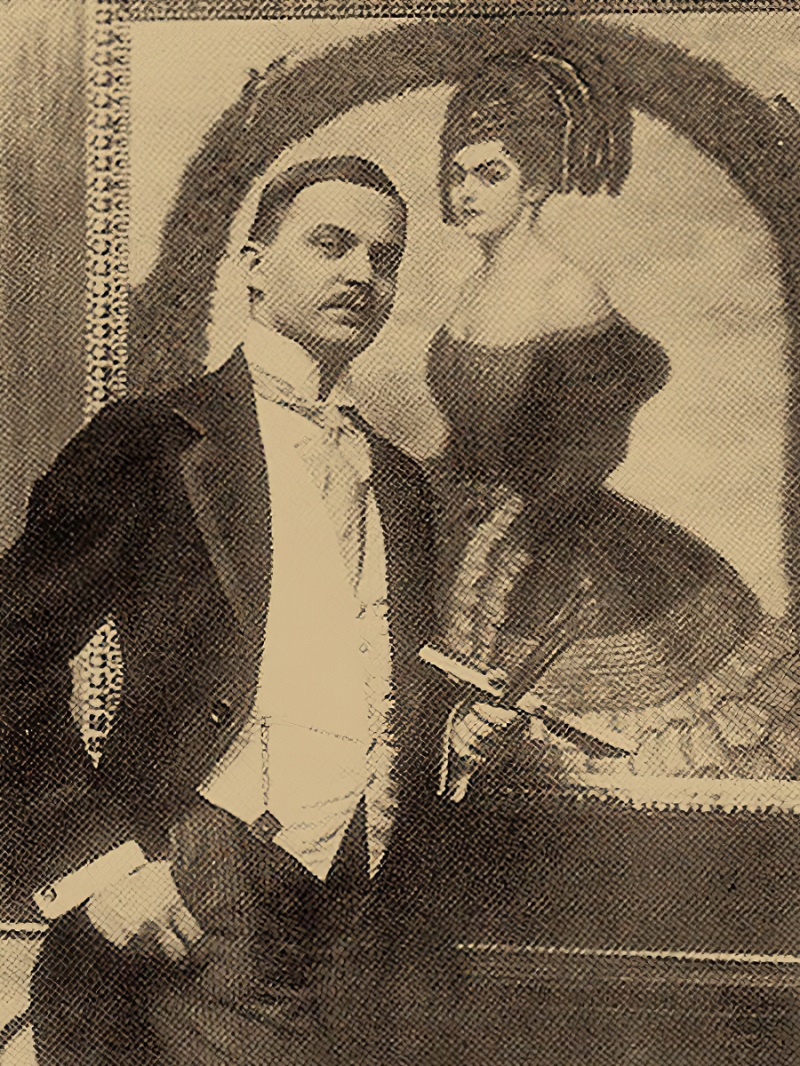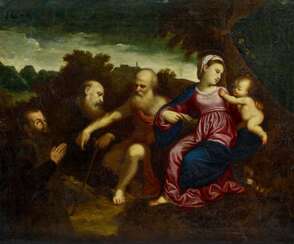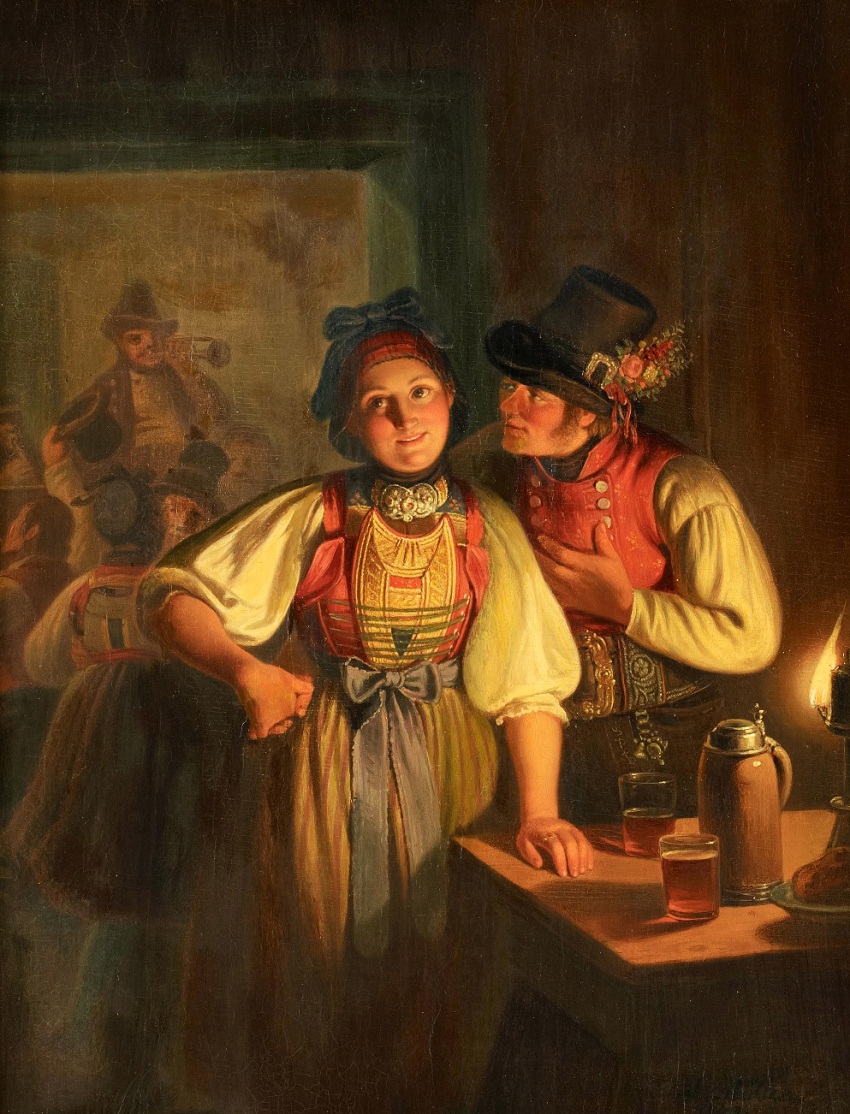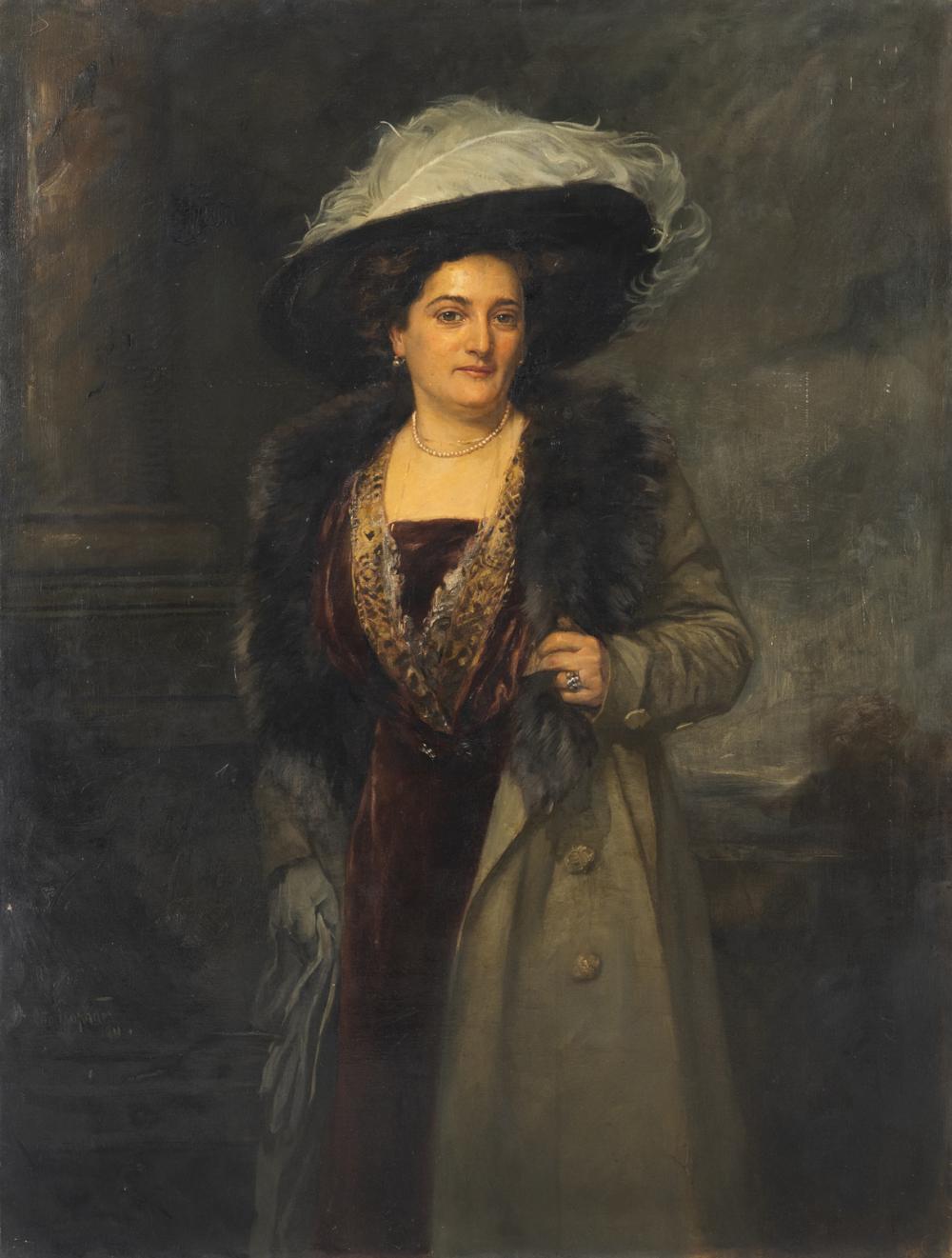
A438 | Ancient art

Giulio Cesare Procaccini was an illustrious Italian painter and sculptor of the Baroque period, celebrated for his dynamic and expressive works. Born in Bologna and later moving to Milan, Procaccini's artistry was deeply influenced by the emotional intensity of Mannerism and the vibrant colorism of Venetian painting, signaling the dawn of the Baroque era.
Procaccini's oeuvre includes significant altarpieces such as the "Circumcision" now in the Galleria Estense in Modena, and the "Last Supper" for the Basilica della Santissima Annunziata del Vastato in Genoa. His collaboration with artists like Giovanni Battista Crespi and Pier Francesco Mazzucchelli under the patronage of Cardinal Federico Borromeo highlighted his pivotal role in the Milanese art scene. Moreover, Procaccini's "Ecce Homo" at the Dallas Museum of Art and "The Agony in the Garden" at the Prado Museum in Madrid exemplify his mastery in depicting religious narratives with profound emotion and technical sophistication.
Procaccini's journey through the art world was marked by his initial work as a sculptor, later transitioning to painting, where he left a lasting legacy. Commissioned to paint scenes commemorating the life of Cardinal Carlo Borromeo in Milan Cathedral, his style evolved to exhibit increased clarity and a brighter palette, indicative of his maturation as an artist. His exposure to the works of Rubens and his travels across Italy allowed him to absorb and reinterpret the stylistic elements of Caravaggio, Correggio, and Parmigianino, enriching his own artistic language.
Though not represented in London's National Gallery, Procaccini's paintings grace collections across Europe and beyond, with notable works in the north of England, including "The Mocking of Christ" at Museums Sheffield and "The Raising of the Cross" at the National Galleries of Scotland. These pieces demonstrate his skillful use of color and ability to convey the physical and emotional weight of biblical stories.
For collectors and experts in art and antiques, Giulio Cesare Procaccini represents a fascinating study in the transition from Mannerism to Baroque, embodying the emotional depth and innovative spirit of early 17th-century Italian art. His contributions to the Baroque period remain a testament to his versatility and enduring appeal.
For updates on new discoveries, sales, and auction events related to Giulio Cesare Procaccini, consider signing up for relevant newsletters or alerts. This ensures that enthusiasts and collectors alike are well-informed about the latest opportunities to engage with the magnificent art of Procaccini.

Prince Paolo Petrovich Troubetzkoy (also known as Pavel or Paul; Russian: Павел Петрович Трубецкой) was an artist and a sculptor who was described by George Bernard Shaw as "the most astonishing sculptor of modern times". By birth, he was a member of the ancient House of Trubetskoy.

Giovanni Francesco Barbieri, better known as Guercino, was an Italian Baroque painter and draftsman from Cento in the Emilia region, who was active in Rome and Bologna. The vigorous naturalism of his early manner contrasts with the classical equilibrium of his later works. His many drawings are noted for their luminosity and lively style.

Carlo Cignani was an Italian painter, a representative of the Bolognese Baroque school.
Although he was educated in Bologna, he was more influenced by Correggio. The last 20 years of his life the artist spent in Forli, engaged in painting churches. The fresco "Assumption of the Virgin" in the dome of the cathedral of Forlì was painted by Cignani on the motives of the painting of the dome of the Cathedral of Parma, made by Correggio.
His son Felice (1660-1724) and nephew Paolo (1709-1764) were also artists.

Aert de Gelder was a Dutch painter. He was the only Dutch artist to paint in the tradition of Rembrandt's late style into the 18th century.
As author of biblical scenes and portraits his style was inspired by Rembrandt's, using his artistic ideas, well into the 18th century, without being influenced by contemporary new fashions. From the artistic point of view his work can not be considered as passive imitation of the master; indeed, it stands for inventiveness in the narrative, taste for the theatrical and a strong emotional charge of the characters. All these traits made him one of the most important interpreters of Dutch painting of the late seventeenth century.

Albert von Keller was a German painter of Swiss ancestry, best known for his indoor scenes and portraits featuring female figures. Born on April 27, 1844, in Gais, Switzerland, he began his career by studying law at Ludwig Maximilian University, but his passion for art led him to the Academy of Fine Arts in Munich. His art journey took him through France and Italy, honing his style through various studio experiences.
Von Keller is recognized for his portraits depicting women in indoor environments, often shown in striking poses or engaging in activities. His later works took on supernatural, mystical, or religious themes. One of his notable achievements was co-founding the Munich Secession in 1892, where he served as vice president from 1904 to 1920.
Several of his works are housed in museums and galleries, such as "Irene von Keller with her son Balthasar" (1888), "The Pianist," and "Chopin" (1873). He also received the Knight's Cross of the Order of the Merit of the Bavarian Crown in 1878.
For collectors and art enthusiasts interested in learning more about Albert von Keller and his work, consider subscribing to updates to stay informed about new product sales and auction events related to this artist. These updates will help you track his artworks and any upcoming exhibitions.

Hippolyte Francois Moreau was a French sculptor renowned for his exquisite bronze and marble sculptures, particularly those depicting young women. Born into an esteemed family of sculptors in Dijon, France, Moreau honed his craft under the guidance of his father, Jean-Baptiste Moreau, and furthered his studies at the prestigious École des Beaux-Arts under François Jouffroy.
Hippolyte Francois Moreau's sculptures are celebrated for their delicate representation of youthful elegance and grace. His works like "Hébé," representing the goddess of youth, exemplify his ability to capture the softness and vitality of his subjects in stone and metal. The finesse in his sculptures earned him recognition and accolades, including medals at the Exposition Universelle in Paris in both 1878 and 1900.
Collectors and art enthusiasts continue to admire and acquire Hippolyte Francois Moreau's sculptures at auctions, with pieces ranging from intricate bronze statuettes to grand marble figures. His art not only reflects the artistic mastery of the 19th century but also continues to resonate with audiences today, showcasing the timeless appeal of his sculptures.
For collectors and experts in art and antiques, Hippolyte Francois Moreau's works offer a glimpse into the elegance of 19th-century French sculpture. Whether you're captivated by his bronze figures or mesmerized by his marble creations, staying updated on Moreau's pieces can enrich your collection and knowledge. Sign up for updates to receive the latest on sales, auctions, and exhibitions featuring Hippolyte Francois Moreau's timeless sculptures.

Hanns Pellar was an Austrian painter and illustrator. He studied painting at the Vienna Academy of Fine Arts under Heinrich Lefler.
Hanns Pellar was one of Munich's most prominent painters, whose quality craftsmanship and very pleasing images were characteristic of the Prince Regent's era. As a "favourite of various respected Darmstadt families", he produced a large number of portraits, especially of ladies, which eventually earned him the nickname "painter of elegance".

Ernst Seger was a German sculptor and medalist, professor.
Seger studied at the Breslau School of Art with Robert Hertel and Christian Behrens, he also studied in Paris, and from the late 1880s he first executed large commissions for public monuments. The sculptor worked in Auguste Rodin's studio in Paris before opening his own studio in Berlin. Ernst Seger became famous primarily for his Art Nouveau female nudes.

































































